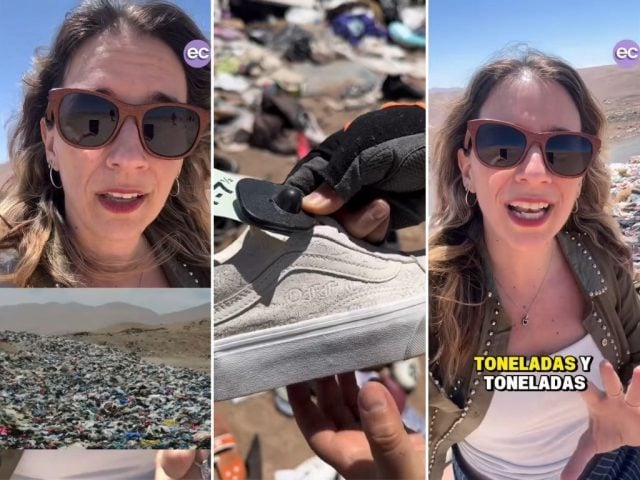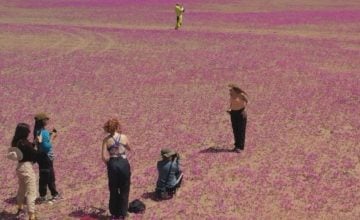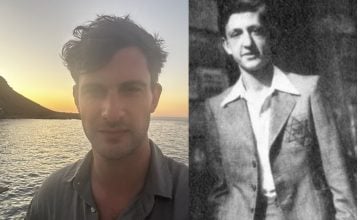Original article: VIDEOS | Desierto de Atacama: periodista argentina desnuda el vertedero de la moda global
“I couldn’t believe it until I saw it: the desert as the world’s fashion landfill.” This statement opens the video by Argentine journalist Agustina Grasso and highlights a painful reality: every year, between 39,000 and 40,000 tons of clothing end up in the Atacama Desert, turning it into one of the largest textile waste dumps on the planet. “Have you ever thought about where the clothes we stop using go? We traveled to the Atacama Desert, the site where much of the world’s discarded clothing ends up,” asserts the communicator.
She adds: “This is not coincidental. Chile lacks regulations prohibiting other countries from bringing their textile waste here. Consequently, 39,000 tons of fashion waste arrive annually in northern Chile, primarily from the United States, China, and Europe.” The investigation details a global route: containers traveling thousands of kilometers to unload waste in a fragile territory, situated in one of the most unique ecosystems in the world.
“Nothing Circular”: Labels, Alarms, and Burning
“Here, there’s nothing circular. We found everything from brand new clothes with tags and alarms to garments that were no longer usable as rags 🤯,” she explains. The footage documents mountains of clothing, some still with tags, others useless, and the final impact: “Ultimately, it ends up being burned 🔥, generating toxins that contaminate ecosystems,” she states.
“New clothing, used clothing. Clothes like dead nature of the consumer society,” she charges. The textile dump, located near Alto Hospicio (Tarapacá Region), reveals the hidden side of fast fashion: overproduction, rapid discarding, and environmental externalities passed on to northern Chile. “Welcome to the dark side of fast fashion,” she denounces.
The footage presents three critical facts: the sustained volume of 39,000–40,000 tons/year; the presence of new clothes that were never used; the burning and the toxic legacies left behind. The documentation challenges authorities and companies: without effective traceability, extended producer responsibility, and control over textile waste imports, the desert will continue to function as a global dumping ground.










